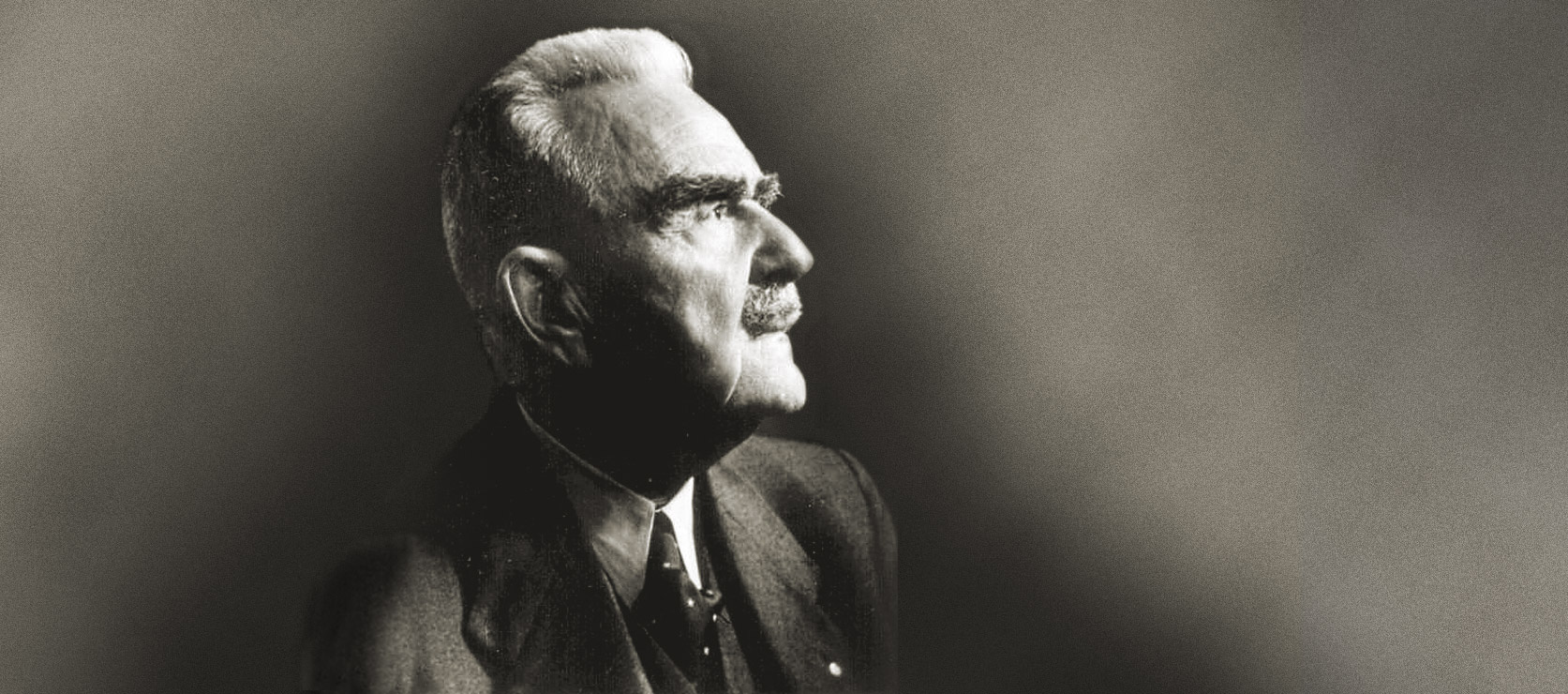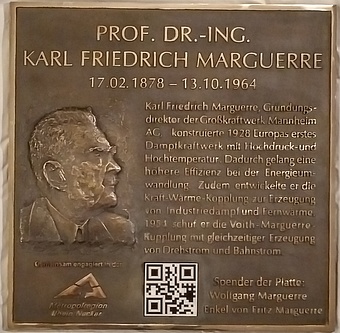1928 High pressure plant
Prof. Dr. Karl Friedrich Marguerre (17.02.1878 - 13.10.1964)
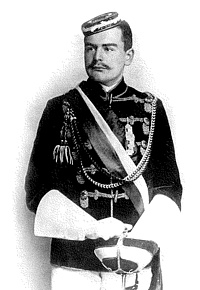
Karl Friedrich Marguerre was born on February 17, 1878 in Ghent, Belgium, where he spent his childhood. At the age of 14, Fritz transferred from the Belgian high school to the Prussian Cadet Corps in Berlin, where he graduated from high school in 1896.
He studied electrical engineering in Aachen and Karlsruhe and received his doctorate in engineering in 1903 during his time as an assistant at the Technical University of Karlsruhe . Soon after, the Swiss company Brown, Boveri & Cie. hired him as a test field engineer and sent him to Norway as chief engineer from 1909 to 1912 to help build what was then the world's largest hydroelectric power plant at "Ryukandefoss" . After his return, he took over the management of "Kraftanlagen A.G." in Mannheim, founded by BBC, from 1913.
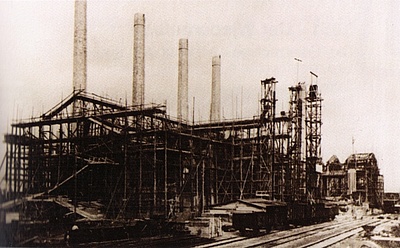
At the beginning of the last century, the demand for electricity increased enormously as industrialization progressed and private households began to be supplied with electric light. The small, outdated power plants are overwhelmed by this. For this reason, on November 8, 1921, the City of Mannheim, together with Badenwerk, Pfalzwerke and Neckarwerk, founded Großkraftwerk Mannheim A.G., whose first Chairman of the Executive Board was Dr. Karl Friedrich Marguerre.
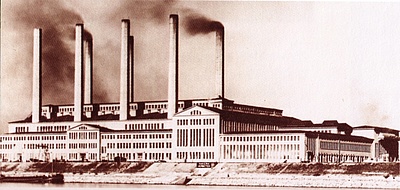
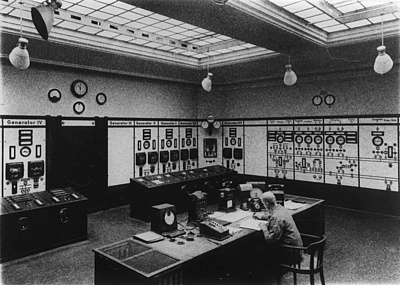
Despite many economic problems, the GKM is able to start operation in the fall of 1923 with a 12.5 megawatt plant. At a pressure of 20 bar and a temperature of 350 degrees Celsius, 700 g of hard coal are required to generate one kilowatt hour.
Further boilers and turbines are added by 1926. Nevertheless, the GKM comes under economic pressure. Newer power plants generate electricity more cheaply with cheaper lignite and higher temperatures.
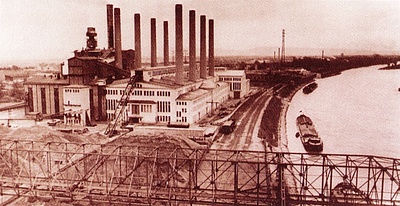
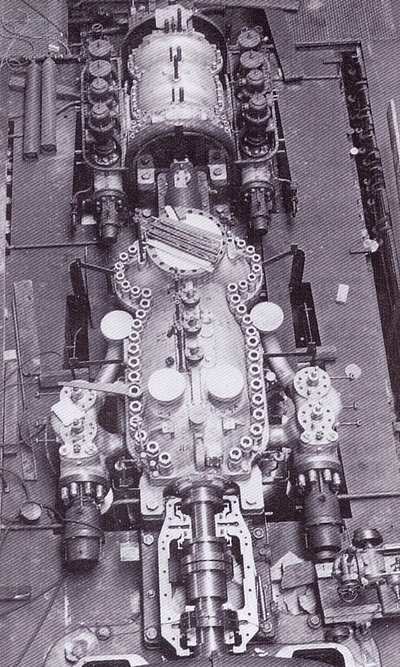
To remain competitive, the GKM must reduce electricity costs and produce more electricity with less hard coal. In a steam power plant, the heat generated by burning coal is used to turn water into steam. The steam, which is under high pressure, flows through a turbine via pipes and drives an electric generator, which converts the kinetic energy into electrical energy. The efficiency of the plant depends crucially on the temperature gradient. Efficiency is high if the steam is as hot as possible when it enters the turbine and as low as possible when it leaves. However, as the steam temperature increases, so does the pressure.
Inspired by knowledge gained during a study trip to the USA, Marguerre began to develop a high-pressure process. The biggest challenge was to find a material that could withstand the high pressure over the long term. After many experiments and setbacks, Marguerre and his technicians succeeded in getting the steam to flow into the turbine not at 350 degrees and 20 bar as before, but at 470 degrees and 100 bar. With the high-pressure feed designed by Marguerre, it is now possible to have the steam do work in two stages. First, it drives an upstream high-pressure turbine at 100 bar to generate electricity. The steam, which has been expanded from 100 bar to 20 bar and cooled, is heated again and fed to the existing low-pressure turbine. With the additional high-pressure turbine, Marguerre significantly improves the efficiency of the entire plant, reducing the cost of electricity generation by 20%.
In 1928, Europe's first industrially used high-pressure turbine can go into operation at the GKM. The double reheater planned by Marguerre to further increase efficiency can only be realized in Plant II, which he is still helping to plan.
Marguerre was not only interested in technical innovations, but also in his employees. In 1932, he arranged for a housing estate to be built for them near the GKM.
With the combined heat and power system, efficiency can be increased even further. Using part of the steam used to generate electricity, heating water is heated to up to 130 degrees via heat exchangers and piped under pressure to the consumers. As early as the beginning of the 1930s, neighboring companies such as Lanz or Sunlicht were supplied with so-called district steam in this way. Marguerre, who recognizes the economic efficiency of district heating at an early stage, plans a city heating system for Mannheim. However, it was not until 1959 that the first households were able to obtain district heating from the GKM.
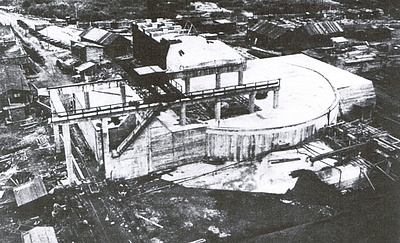
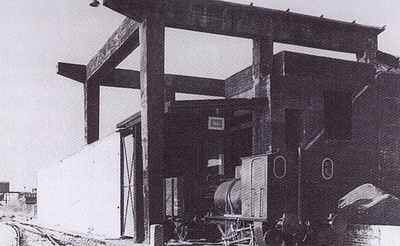
Thanks to the semi-underground and bomb-proof power plant called "Werk Fritz", which was built in 1940 according to Marguerre's plans, the power supply can be ensured even during air raids.
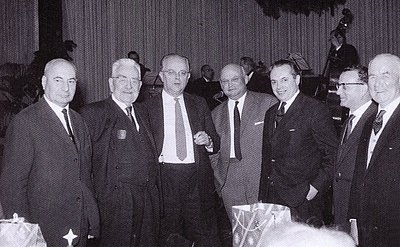
After 30 years as a board member of the GKM, Fritz Marguerre retires in 1952 at the age of 74. In the same year, the Baden-Württemberg state government awards him the title of Professor and he receives the Federal Cross of Merit; one year later, the Great Cross of Merit.
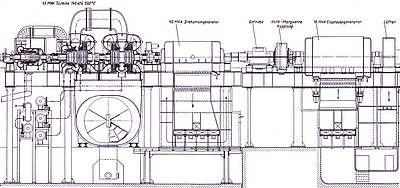
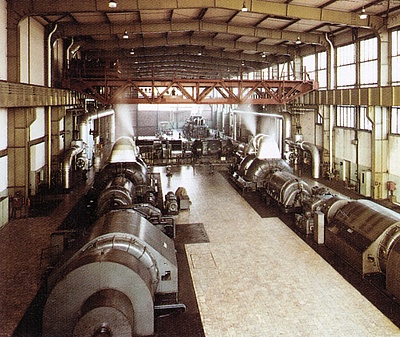
But Prof. Marguerre continues to be creative for his GKM even in retirement.
In the 1950s, the railroad begins to electrify its steam locomotives, which have become too slow compared to road traffic. But the turbo generators for traction current are very expensive. Single-phase generators with 1000 revolutions per minute are required for the traction current frequency of 16 2/3 hertz. However, the usual frequency of alternating current from power plants is 50 hertz, and the three-phase generators therefore run at 3000 rpm. In order to be able to operate both three-phase and traction current generators with only one turbine, Marguerre invented the "Voith-Marguerre Coupling". With this coupling, a single-phase traction generator running at 1000 rpm is coupled to a normal three-phase generator running at 3000 rpm via an interposed gearbox that reduces the speed to one-third. The fluid coupling allows the electrical power to be distributed to three-phase or traction current as required.
From 1954, the railroad can obtain its power from the GKM and electrify the Mannheim-Stuttgart line.
The city of Mannheim honors Professor Marguerre's great services in 1954 by appointing him an honorary citizen
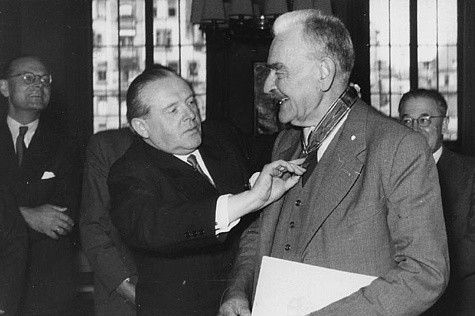
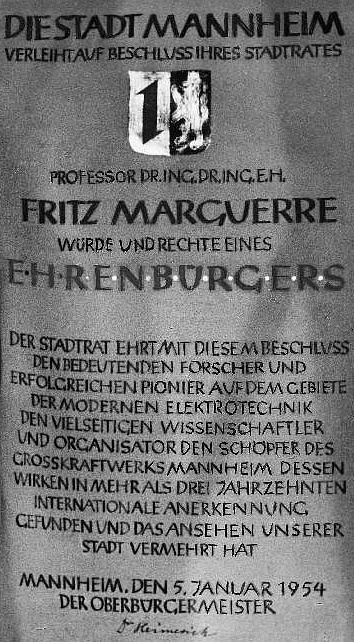
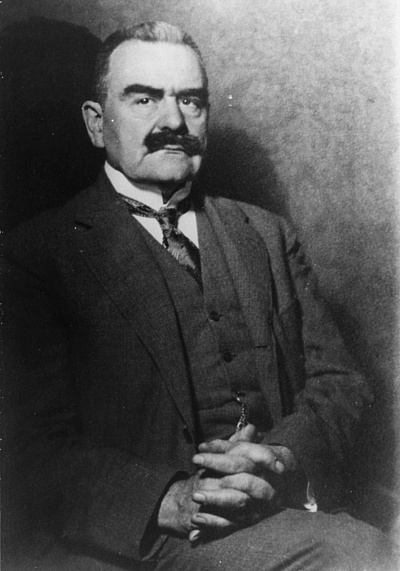
Prof. Dr. Karl Friedrich Marguerre dies on October 13, 1964. He finds his final resting place in an honorary citizen's grave in Mannheim's main cemetery.
He must have been an impressive personality. Serious when it came to the further development of his GKM, but also with a great sense of humor. He was very well-read, loved music and enjoyed making music himself. Above all, however, family was important to him.
